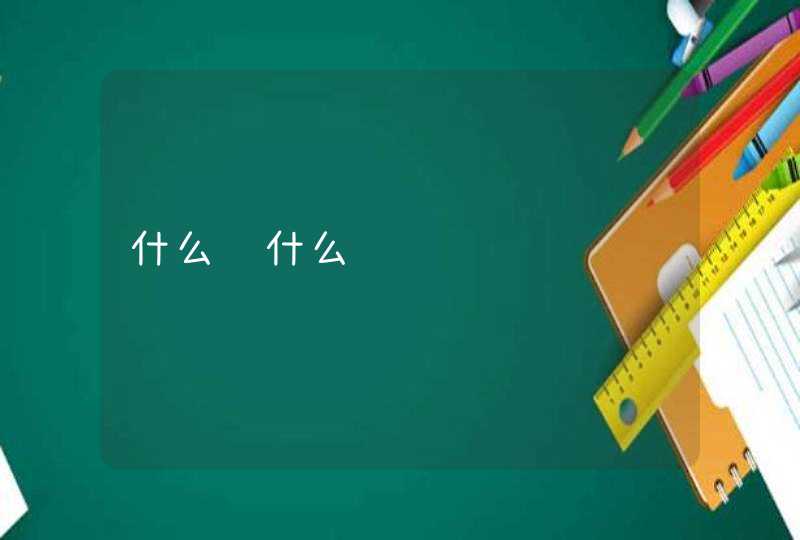没有此品牌的灯泡。
hungary是浙江大明机电有限公司品牌。
该公司成立于1998年10月22日,注册地位于温岭市大溪镇山市杭温路12号,法定代表人为吴小方。
经营范围包括水泵、电机、风机、排风扇、压缩机、氧气泵、电焊机制造,销售(法律法规规定限制、淘汰类项目除外),货物进出口、技术进出口。
HUN是匈牙利的简称,HUN一词也是从德语“Hungary”翻译而来的,该词与英文中“饥饿”不同。匈牙利全称匈牙利共和国,是欧洲中部以平原为主的内陆国家,著名的多瑙河及其支流贯穿整个国家。匈牙利气候变化多样,属大陆性温带落叶阔叶林气候。
hun是什么国家的简称
HUN作为匈牙利的简称,是从德语Hungary一词中翻译得到的。匈牙利作为欧洲中部内陆国家,首都为布达佩斯,也有自己的官方语言匈牙利语。在众多邻国罗马尼亚、乌克兰、克罗地亚等国中,算是比较发达的国家了。但匈牙利在2014年全国总人口在9879万人,而在2017年1月,全国总人口在9798万人,人口反而有所降低。
多瑙河对于匈牙利而言就是国家的母亲河,多瑙河及其支流蒂萨河贯穿了整个匈牙利境内,多瑙河以东是匈牙利太平原,西北部是匈牙利小平原,北部为科尔巴阡山脉的一部分,其中凯凯什峰是全国的最高点,西部为多瑙山地,为阿尔卑斯山的余脉。
匈牙利地处北半球温带地区,属于大陆性温带落叶阔叶林气候,造成这一气候的原因是因为匈牙利国家处在温带大陆性气候、温带海洋性气候以及地中海气候的交汇点处,其中影响最大的还是温带大陆性气候。但匈牙利的气候还是非常适宜的,夏季平均气温在217摄氏度,冬季平均气温为-12摄氏度。
匈牙利
基本资料
中文名称:匈牙利
英文名称:Hungary
简称:匈牙利
国家代码:HUN
国际电话区号:+36
国际域名缩写:hu
地理信息
所属洲:欧洲
主要城市:米什科尔茨,德布勒森
时区:东一区
国土面积:93030平方公里
官方信息
首都:布达佩斯
国庆日:1949年8月20日
国歌:《天祐匈牙利人》(Himnusz)
官方语言:匈牙利语,德语,部分用捷克语。
货币:匈牙利福林
国家领袖:总统阿戴尔·亚诺什,总理欧尔班·维克托
数据统计
人口数量:9,986万(2012年)
人口密度:1072人/平方公里(2012年)
水域率:074%
GDP总计:1268亿美元(国际汇率)
人均GDP:12705美元(国际汇率)
人文信息
主要民族:匈牙利人
主要宗教:天主教,基督新教
道路通行:靠右驾驶
其他信息政治体制:代议民主共和制
最大城市:布达佩斯
人类发展指数:0879
国花:天竺葵
中央银行:匈牙利国家银行
气候:温带大陆性气候
人类发展指数:0831(高)
立国日期:1000年12月25日
最大湖泊:巴拉顿湖
最长河流:蒂萨河
地理最高点:凯凯什峰(1014米)
望及时采纳!
hungary代表的国家是:
匈牙利
匈牙利,中国古称马扎儿,是一个位于欧洲中部的内陆国家,与奥地利、斯洛伐克、乌克兰、罗马尼亚、塞尔维查看百科>>
来自百度百科|报错感谢反馈
中文名称
匈牙利
英文名称
hungary
简 称
匈牙利
所属洲
欧洲
首 都
布达佩斯
主要城市
米什科尔茨,德布勒森
国庆日
1949年8月20日
国 歌
《天祐匈牙利人》(himnus
国家代码
hun
官方语言
匈牙利语
货 币
匈牙利福林
时 区
utc+1(夏时制:utc+2)
政治体制
议会制共和制
国家领袖
总统阿戴尔·亚诺什,总理
人口数量
9879万(2014年1月)
人口密度
1062人/平方公里(2014年
主要民族
匈牙利人
主要宗教
天主教,基督新教
国土面积
93030平方公里
水域率
074%
General Information
Dear Guest!
We are delighted that you have chosen Hungary, our homeland, as your destination
This is the country
- which boasts one of the world's most beautiful capital cities: Budapest, the "Pearl of the Danube", whose wonderful panorama is on UNESCO's World Heritage list,
-where, despite repeated historical disasters which devastated both the people and their heritage, much remains of great value that is worth visiting and getting to know,
- where 2000-year-old Roman ruins and 400-year-old Turkish monuments can be found side-by-side, not to mention beautiful churches from the Romanesque period in Ják, Lébényszentmiklós, and Pannonhalma, or one-time stately castles in Eger, Sümeg, and Siklós,
- where magnificent palaces functioning as hotels await tourists in Szirák, Seregélyes, and Nagycenk, to mention only the most famous,
- where Lake Balaton is located, Central Europe's largest lake, providing a natural paradise for families with small children,
- where hundreds of therapeutic mineral springs gush up from the depths, helping many thousands to recover their health,
- where the rich Hungarian folk art and the horse shows which introduce the lifestyle and traditions of the "puszta" (Great Hungarian Plain) attract tens of thousands
And there's something else that keeps bringing visitors back to us - the legendary Hungarian hospitality
Hungary
History
Main article: History of Hungary
The arrival of the Magyars at the Carpathian BasinIn the time of the Roman Empire, the region west of the Danube river was known as Pannonia After the Western Roman Empire collapsed under the stress of the migration of Germanic tribes and Carpian pressure, the Migration Period continued bringing many invaders to Europe Among the first to arrive were the Huns, who built up a powerful empire under Attila It is presently believed that the origin of the name "Hungary" does not come from the Central Asian nomadic invaders called the Huns, but rather originated from a later, 7th century Bulgar alliance called On-Ogour, which in Old Turkish meant "(the) Ten Arrows"[1][2]
After Hunnish rule faded, the Lombards and the Gepids ruled in Pannonia for about 100 years, during which the Slavic tribes began migrating into the region In the 560s, the Slavs were supplanted by the Avars, who maintained their supremacy of the land for more than two centuries The Franks under Charlemagne from the west and the Bulgars from the southeast managed to overthrow the Avars in the early 9th century However, the Franks soon retreated, and the Slavonic kingdom of Great Moravia and the Balaton Principality assumed control of much of Pannonia until the end of the century The Magyars migrated to Hungary in the late 9th century
Magyar tradition holds that the Country of the Magyars (Magyarország) was founded by Árpád, who led the Magyars into the Pannonian plain in 896 AD The "Ten Arrows" mentioned above referred to ten tribes, the alliance of which was the foundation of the army of the invading Magyars
Politics
article: Politics of Hungary
The President of the Republic, elected by the Parliament every 5 years, has a largely ceremonial role, choosing the dates of the parliamentary elections
The prime minister selects Cabinet ministers and has the exclusive right to dismiss them Each Cabinet nominee appears before one or more parliamentary committees in open hearings and must be formally approved by the President
A unicameral, 386-member National Assembly (the Országgyűlés) is the highest organ of state authority and initiates and approves legislation sponsored by the Prime Minister National Parliamentary elections are held every 4 years (the next will be held probably in 2010)
An 11-member Constitutional Court has power to challenge legislation on grounds of unconstitutionality
Economy
Main article: Economy of Hungary
Hungarian ForintHungary continues to demonstrate economic growth as one of the newest member countries of the European Union (since 2004) The private sector accounts for over 80% of GDP Hungary gets nearly one third of all foreign direct investment flowing in to Central Europe Foreign ownership of and investment in Hungarian firms are widespread, with cumulative foreign direct investment totalling more than US$23 billion since 1989 The Hungarian sovereign debt's credit rating is BBB+ as of July 2006, making Hungary the only other country in the EU apart from Poland not to enjoy an A grade score Inflation and unemployment have been on the rise in the past few years, and they are expected to rise further Foreign investors' trust in the Hungarian economy has declined, as they deem that the stringency measures planned in the second half of 2006 are not satisfactory, their focus being mainly on increasing the income side rather than curbing government spendings Economic reform measures such as health care reform, tax reform, and local government financing are being addressed by the present government
The Hungarian government has expressed a desire to adopt the euro currency between 2010 and 2014 [5] However, foreign analysts widely criticised that date (2010) as highly unrealistic given the current shape of the economy in relation to the Maastricht criteria; their assessments suggest that a date of 2013-2014 for Euro adoption is more realistic
匈牙利叫“Hungary”,这个词是从德语过来的。
和“饥饿”不是一个意思。
匈牙利:
匈牙利(匈牙利语:Magyarország)是一个位于欧洲中部的内陆国家,与奥地利、斯洛伐克、乌克兰、罗马尼亚、塞尔维亚、克罗地亚和斯洛文尼亚接壤,截止2014年1月,全国总人口9879万人,首都为布达佩斯。官方语言为匈牙利语,这是欧洲最广泛使用的非印欧语系语言。
匈牙利是一个发达的资本主义国家,人均生活水平较高。到2012年,匈牙利的人均国内生产总值按国际汇率计算已经达到127万美元,已经达到中等发达国家水平。按照购买力平价计算,则匈牙利的人均国内生产总值已经达到2万美元。匈牙利舞曲受全世界各国人民喜爱。2017年11月14日,入选世界遗产委员会成员。
以上就是关于hungary是什么牌子灯泡全部的内容,包括:hungary是什么牌子灯泡、hun是哪个国家的简称、hungary是哪个国家等相关内容解答,如果想了解更多相关内容,可以关注我们,你们的支持是我们更新的动力!


